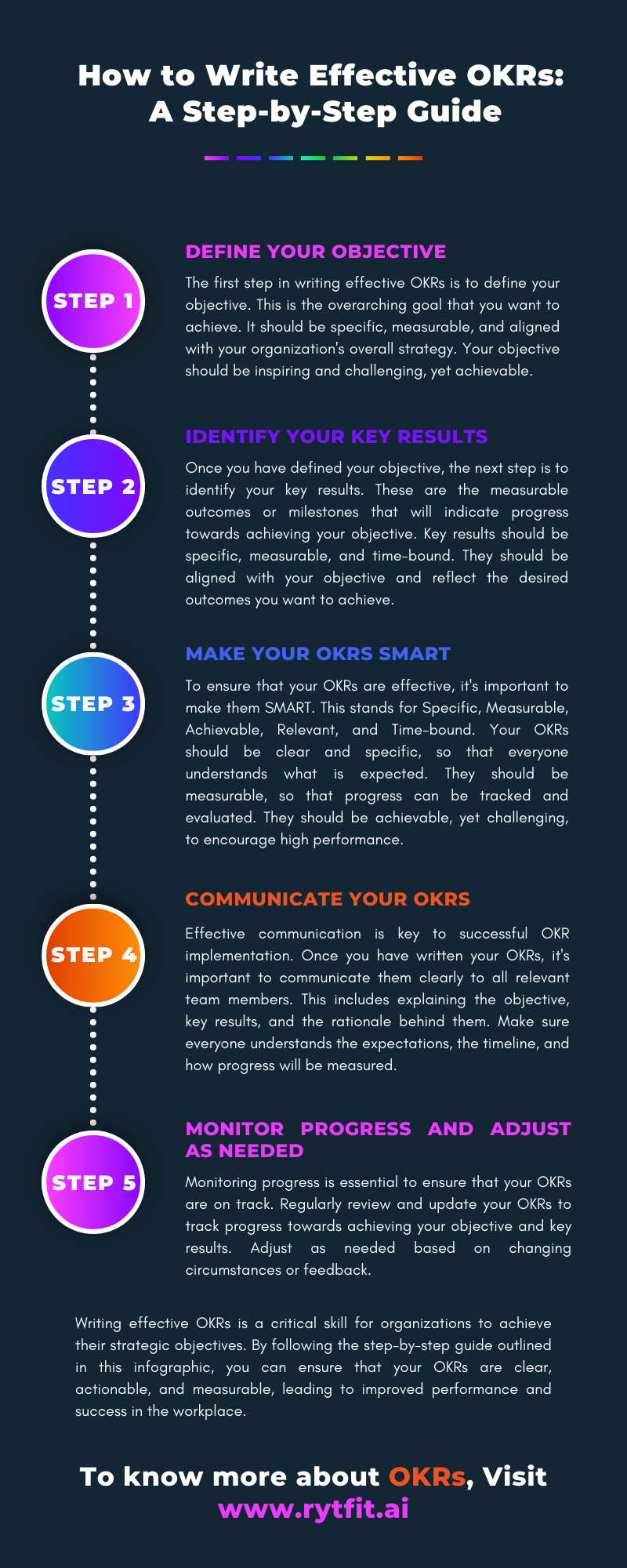OKRs, or Objectives and Key Results, are a goal-setting framework used by organizations to align teams and individuals toward achieving strategic objectives.
Introduction:
OKRs are a way to align an organization’s goals and measure progress toward those goals. By setting objectives and identifying key results, organizations can track progress and ensure that everyone is working towards the same outcome. Writing effective OKRs is crucial for driving performance, accountability, and success in the workplace. In this infographic, we will provide you with a step-by-step guide on how to write effective OKRs that are clear, actionable, and measurable.
Step 1: Define Your Objective
The first step in writing effective OKRs is to define your objective. This is the overarching goal that you want to achieve. It should be specific, measurable, and aligned with your organization’s overall strategy. Your objective should be inspiring and challenging, yet achievable.
Step 2: Identify Your Key Results
Once you have defined your objective, the next step is to identify your key results. These are the measurable outcomes or milestones that will indicate progress toward achieving your objective. Key results should be specific, measurable, and time-bound. They should be aligned with your objective and reflect the desired outcomes you want to achieve.
Step 3: Make Your OKRs SMART
To ensure that your OKRs are effective, it’s important to make them SMART. This stands for Specific, Measurable, Achievable, Relevant, and Time-bound. Your OKRs should be clear and specific so that everyone understands what is expected. They should be measurable so that progress can be tracked and evaluated.
They should be achievable, yet challenging, to encourage high performance. They should be relevant and aligned with your overall strategy, and they should have a time-bound deadline for completion.
Step 4: Communicate Your OKRs
Effective communication is key to successful OKR implementation. Once you have written your OKRs, it’s important to communicate them clearly to all relevant team members. This includes explaining the objective, key results, and the rationale behind them. Make sure everyone understands the expectations, the timeline, and how progress will be measured.
Step 5: Monitor Progress and Adjust as Needed
Monitoring progress is essential to ensure that your OKRs are on track. Regularly review and update your OKRs to track progress towards achieving your objective and key results. Adjust as needed based on changing circumstances or feedback. Use data and metrics to evaluate progress and make informed decisions about how to improve performance.
Conclusion:
Writing effective OKRs is a critical skill for organizations to achieve their strategic objectives. By following the step-by-step guide outlined in this infographic, you can ensure that your OKRs are clear, actionable, and measurable, leading to improved performance and success in the workplace.


